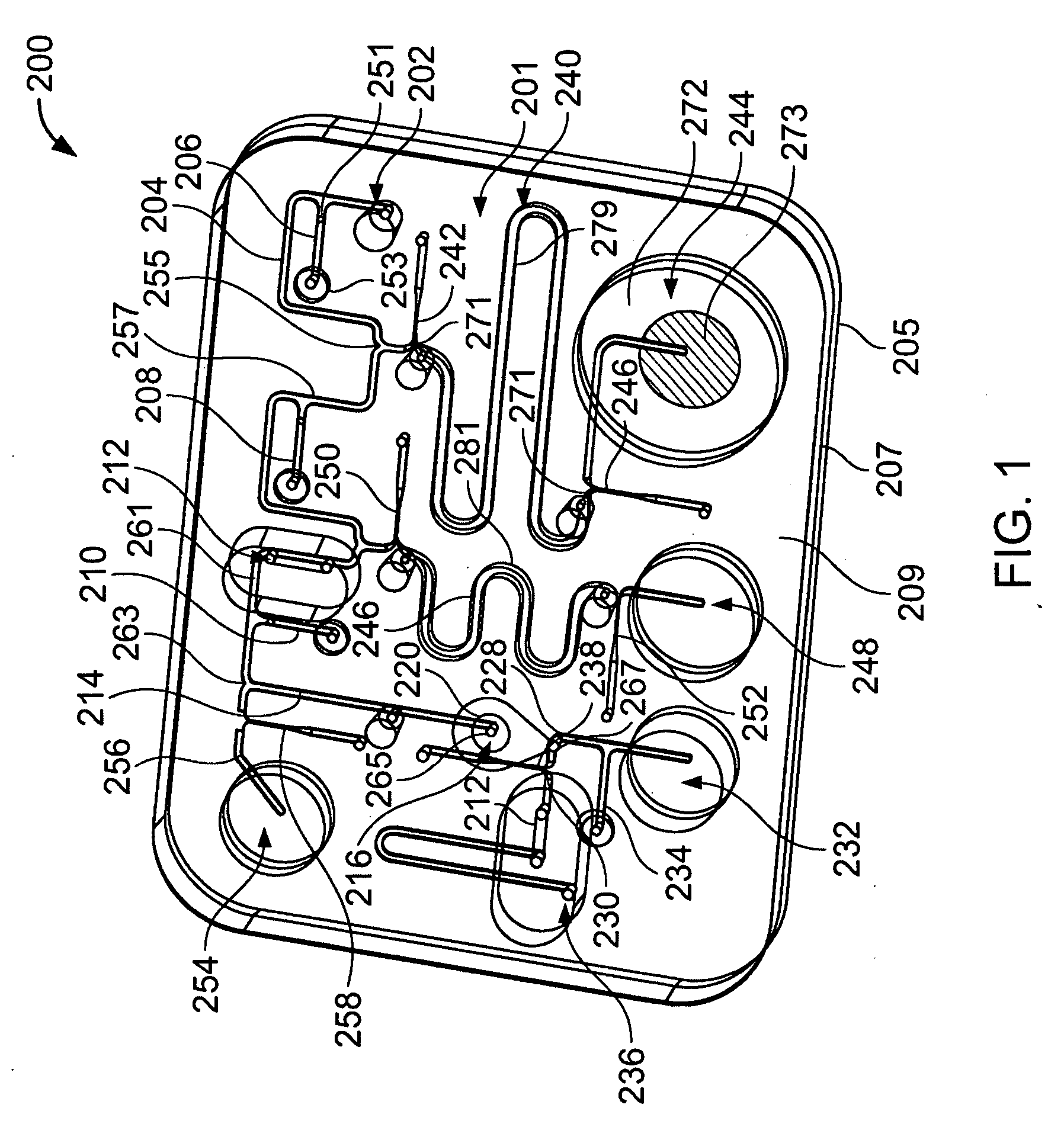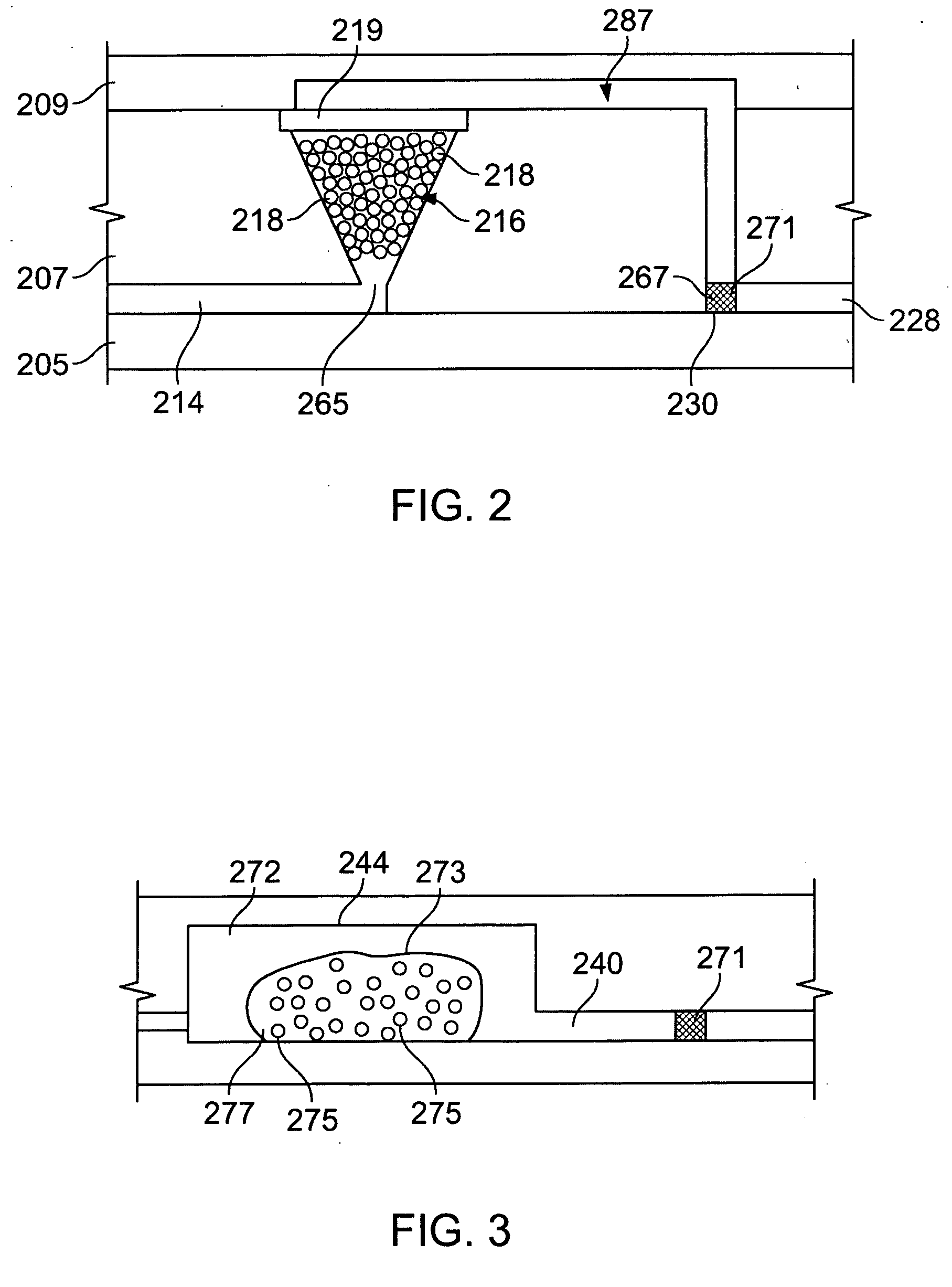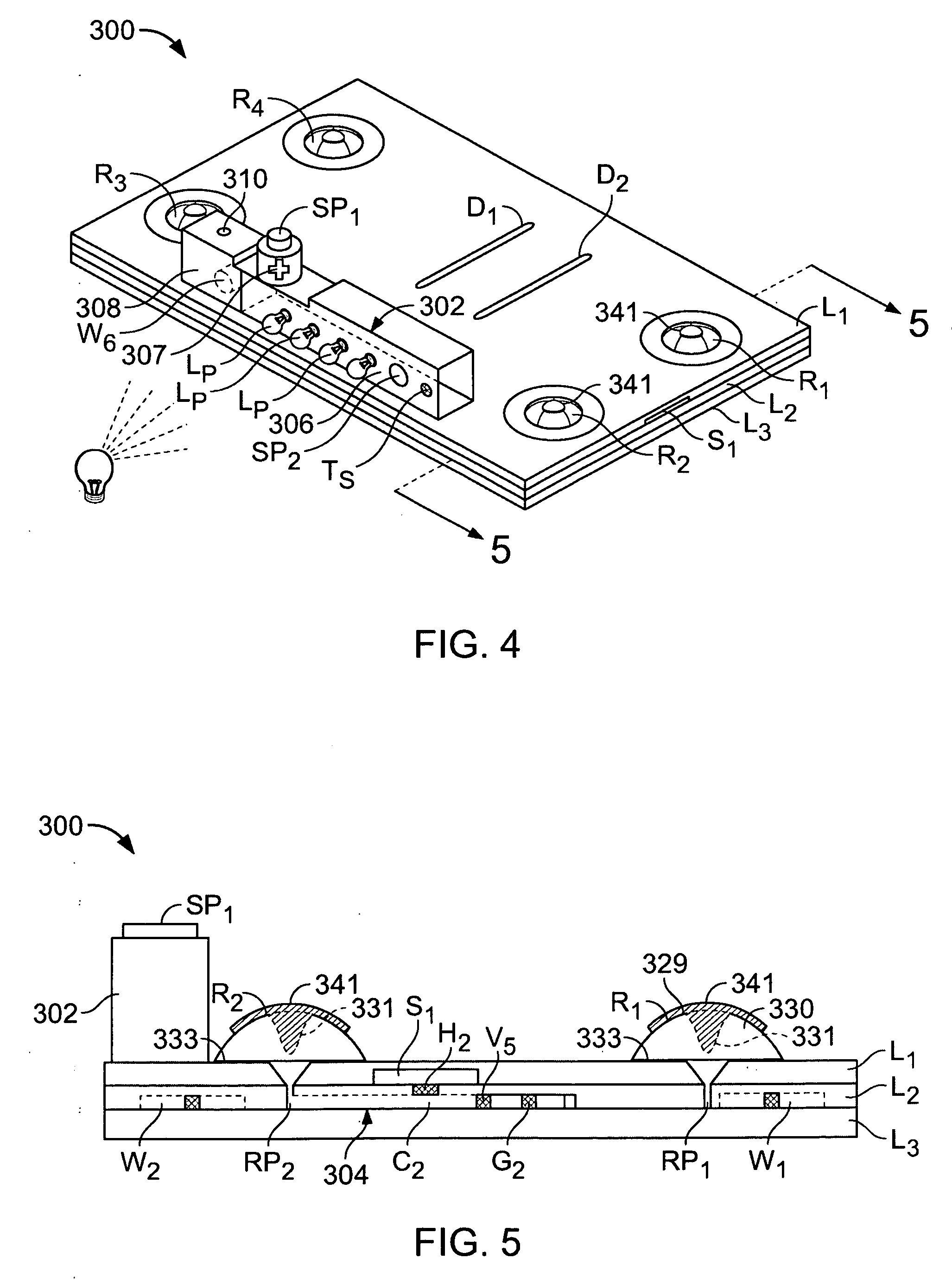Method and apparatus for processing polynucleotide-containing samples
- Summary
- Abstract
- Description
- Claims
- Application Information
AI Technical Summary
Benefits of technology
Problems solved by technology
Method used
Image
Examples
example 1
Preparing Retention Member
[0229] Carboxylate surface magnetic beads (Sera-Mag Magnetic Carboxylate modified, Part #3008050250, Seradyn) at a concentration of about 1011 mL−1 were activated for 30 minutes using N-hydroxylsuccinimide (NHS) and 1-ethyl-3-(3-dimethylaminopropyl) carbodiimide (EDAC) in a pH 6.1 500 mM 2-(N-Morpholinio)-ethanesulfonic acid (MES) buffer solution. Activated beads were incubated with 3000 Da or 300,000 Da average molecular weight poly-L-lysine (PLL). After 2 washes to remove unbound PLL, beads were ready for use.
example 2
Microfluidic Device
[0230] Referring to FIGS. 20 and 21, a microfluidic device 300 was fabricated to demonstrate separation of polynucleotides from inhibitors. Device 300 comprises first and second substrate portions 302′, 304′, which respectively comprise first and second layers 302a′, 302b′ and 304a′, 304b′. First and second layers 302a′, 302b′ define a channel 306′ comprising an inlet 310′ and an outlet 312′. First and second layers 304a′, 304b′ define a channel 308′ comprising an inlet 314′ and an outlet 316′. First and second substrate portions 302′, 304′ were mated using adhesive 324′ so that outlet 312′ communicated with inlet 314′ with a filter 318′ positioned therebetween. A portion of outlet 312′ was filed with the activated beads prepared above to provide a processing region 320′ comprising a retention member (the beads). A pipette 322′ (FIG. 22) secured by adhesive 326′ facilitated sample introduction.
[0231] In use, sample introduced via inlet 310′ passed along channel ...
example 3
Retention of DNA
[0232] Retention of polynucleotides by the poly-L-lysine modified beads of device 300′ was demonstrated by preparing respective devices comprising processing regions having a volume of about 1 μL including about 1000 beads. The beads were modified with poly-L-lysine of between about 15,000 and 30,000 Da. Each processing region was filled with a liquid comprising herring sperm DNA (about 20 uL of sample with a concentration of about 20 mg / mL) thereby placing the beads and liquid in contact. After the liquid and beads had been in contact for 10 minutes, the liquid was removed from each processing region and subjected to quantitative real-time PCR to determine the amount of herring sperm DNA present in the liquid.
[0233] Two controls were performed. First, an otherwise identical processing region was packed with unmodified beads, i.e., beads that were identical with the poly-L-lysine beads except for the activation and poly-L-lysine incubation steps. The liquid compris...
PUM
| Property | Measurement | Unit |
|---|---|---|
| Temperature | aaaaa | aaaaa |
| Temperature | aaaaa | aaaaa |
| Temperature | aaaaa | aaaaa |
Abstract
Description
Claims
Application Information
 Login to View More
Login to View More - R&D
- Intellectual Property
- Life Sciences
- Materials
- Tech Scout
- Unparalleled Data Quality
- Higher Quality Content
- 60% Fewer Hallucinations
Browse by: Latest US Patents, China's latest patents, Technical Efficacy Thesaurus, Application Domain, Technology Topic, Popular Technical Reports.
© 2025 PatSnap. All rights reserved.Legal|Privacy policy|Modern Slavery Act Transparency Statement|Sitemap|About US| Contact US: help@patsnap.com



